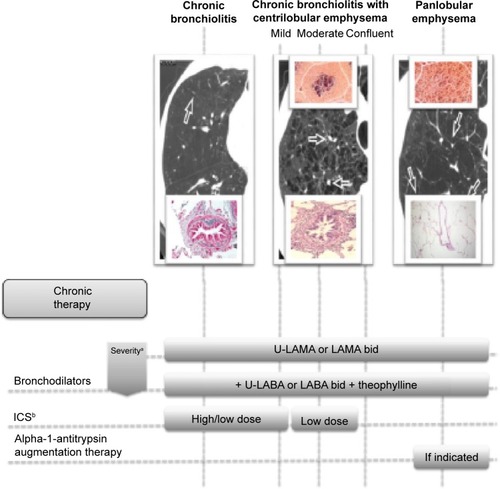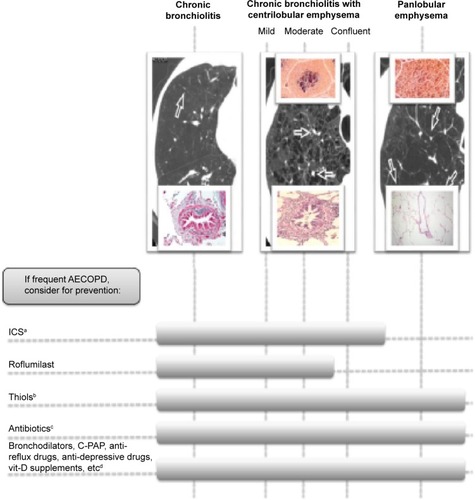Figures & data
Table 1 Functional aspects of patients with prevalent chronic bronchiolitis
Table 2 Functional aspects of patients with prevalent emphysema
Figure 1 The baseline pharmacological approach to COPD according to the prevalent underlying disease.
Abbreviations: bid, twice daily; FEV1, forced expiratory volume in 1 second; ICS, inhaled corticosteroids; FENO, fractional exhaled nitric oxide; LABA, long-acting beta-adrenoceptor agonist; LAMA, long-acting muscarinic antagonist; U-LABA, ultralong-acting beta-adrenoceptor agonist; U-LAMA, ultralong-acting muscarinic antagonist.

Figure 2 The different preventive approach to acute exacerbation in COPD.
Abbreviations: AECOPD, acute exacerbations of chronic obstructive pulmonary disease; vit, vitamin; ICS, inhaled corticosteroids; C-PAP, continuous positive airway pressure.

